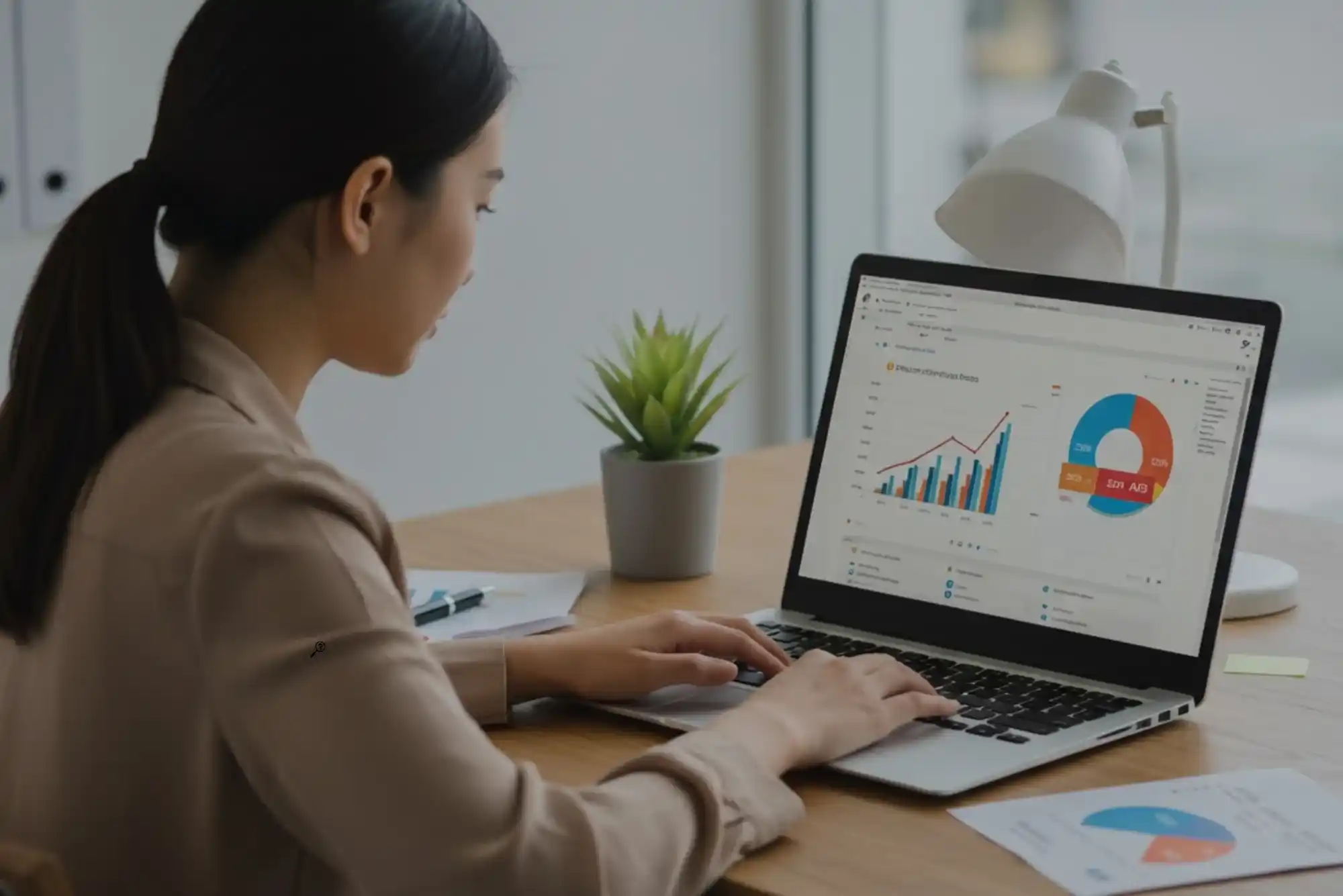Google Ads has become one of the most effective tools for driving targeted traffic, generating leads, and boosting conversions. However, many advertisers struggle with one key challenge—high cost per click (CPC). Reducing CPC while maintaining or improving performance requires a mix of strategy, optimization, and data-driven decisions. In this article, we’ll explore how to effectively reduce cost per click in Google Ads, while also leveraging PPC Google Ads strategies and insights from Social Media Marketing to create a more cost-efficient advertising campaign.
Understanding Cost Per Click in Google Ads
Before we discuss how to reduce CPC, it’s important to understand what it really means. Cost per click refers to the amount you pay every time someone clicks on your ad. The rate is determined through Google’s auction system, where advertisers bid for keywords. However, it’s not just about who bids the highest — Google also considers factors such as ad quality, relevance, and expected impact. This means that even if your bid is lower than competitors, you can still rank higher and pay less if your ad quality is superior.
The key lies in balancing budget, keyword selection, and ad performance. A well-optimized PPC campaign can lower your CPC dramatically without reducing the number of clicks or conversions.
The Importance of Quality Score
Your Quality Score is one of the most crucial factors affecting CPC in Google Ads. It’s Google’s rating of the relevance and quality of your keywords, ads, and landing pages. A higher Quality Score means Google perceives your ad as more relevant and useful to users, which results in lower CPCs and better ad placements.
To improve your Quality Score, focus on three main areas:
-
Keyword relevance
-
Ad copy quality
-
Landing page experience
For example, if you are running a PPC campaign for “affordable SEO services,” make sure that your ad and landing page clearly reflect this offering. The content, headings, and visuals on the landing page should align perfectly with the ad’s intent. When Google sees that users engage positively with your ads, your Quality Score improves — and your cost per click goes down.
Keyword Research and Match Types
One of the most common reasons for high CPC is poor keyword targeting. Many advertisers waste money on broad or irrelevant keywords that don’t lead to meaningful engagement. Instead, focus on using long-tail keywords that have a more specific intent and lower competition.
For instance, instead of bidding on a general keyword like “digital marketing,” you could target “affordable digital marketing for small businesses.” This approach not only attracts a more targeted audience but also reduces competition and costs.
Experiment with different match types—broad match, phrase match, and exact match—to control when your ad appears. Broad match keywords might attract more clicks, but they often come with higher CPC and lower relevance. Phrase and exact match options help you maintain precision and relevance, keeping CPC under control.
Ad Relevance and Copy Optimization
Your ad copy plays a massive role in determining how users interact with your ad. A highly relevant, well-crafted ad can significantly improve click-through rate (CTR), which in turn boosts your Quality Score and reduces CPC.
Write ad copy that directly addresses your audience’s needs and includes your target keywords naturally. Make your value proposition clear and specific — instead of saying “Best digital marketing agency,” try “Get results-driven PPC campaigns starting at $50.”
Include a strong call-to-action (CTA) that motivates users to click, such as “Start your free consultation today” or “Boost your conversions instantly.” The more relevant your ad feels to user intent, the less you’ll pay per click over time.
Using Negative Keywords Effectively
One of the simplest but most overlooked strategies to reduce CPC is using negative keywords. These are terms you add to your campaign to prevent your ad from showing up for irrelevant searches. For example, if you offer “paid digital marketing services,” you may want to add “free,” “DIY,” or “jobs” as negative keywords.
By filtering out unqualified traffic, you ensure that your ads only appear for people genuinely interested in your offer. This helps increase conversion rates and decrease wasted ad spend, lowering your average CPC significantly.
Optimize Landing Pages for Better Performance
Landing pages are often the silent contributors to your ad performance. Even if your ad copy and keywords are perfect, a poorly optimized landing page can drag your campaign down. Google evaluates landing page quality based on load speed, relevance, and user experience.
Make sure your landing page aligns perfectly with your ad message. If your ad promotes “PPC Google Ads Management Services,” your landing page should clearly talk about your expertise in PPC campaigns, showcase results, and include testimonials or case studies. A fast, mobile-friendly, and conversion-focused page helps reduce bounce rates, which positively impacts Quality Score and CPC.
Adjusting Bids Strategically
You don’t always have to lower bids to reduce CPC. Strategic bidding can help you maintain visibility while managing costs. Use Google Ads’ automated bidding strategies like “Target CPA” (cost per acquisition) or “Maximize Conversions” to let Google optimize your bids based on performance.
Another approach is to analyze the performance by device, time, and location. You might find that mobile clicks cost less but convert better, or that ads perform better during specific hours. Adjust your bids accordingly to allocate budget where it delivers the most value.
Testing and Optimization
Running a successful PPC Google Ads campaign isn’t a one-time task—it’s an ongoing process. Regular A/B testing helps identify which elements drive the best results. You can test ad headlines, descriptions, CTAs, landing page layouts, or even bidding strategies.
Consistently reviewing performance metrics such as CTR, conversion rate, and Quality Score allows you to make data-driven adjustments. Over time, these refinements help bring down your CPC without sacrificing reach or results.
The Role of Social Media Marketing
Integrating Social Media Marketing with Google Ads can also reduce CPC in the long run. Platforms like Facebook, Instagram, and LinkedIn allow you to build brand awareness and engagement before users even see your Google Ads.
For example, running a retargeting campaign on Google for users who’ve already interacted with your brand on social media can result in higher conversions at lower CPCs. Social Media Marketing helps warm up your audience, making them more receptive to your PPC campaigns. It also provides valuable insights into user behavior and interests, which can refine your Google Ads targeting strategy.
Moreover, creating consistent messaging across your social media and Google Ads channels enhances brand recall. When users see your ad, they already trust your brand, leading to a higher CTR and reduced CPC over time.
Leveraging Data and Analytics
Data is at the heart of every successful PPC campaign. Use tools like Google Analytics and Google Ads Reports to understand where your money is going and how users are interacting with your ads. Identify which keywords, demographics, or devices deliver the best return on investment.
By analyzing these insights, you can make informed decisions on where to increase or reduce bids, which ads to pause, and which landing pages to optimize. Over time, this continuous optimization cycle ensures you’re spending your ad budget effectively and keeping CPC at an optimal level.
Balancing PPC Google Ads and Organic Growth
While PPC campaigns deliver quick results, combining them with organic efforts like SEO and Social Media Marketing creates a sustainable marketing ecosystem. Organic content builds brand credibility and authority, reducing your reliance on paid ads over time.
When your brand gains visibility through organic search and social platforms, your PPC campaigns often perform better at lower costs. Users are more likely to click your ads when they already recognize your brand from organic channels. This synergy helps you achieve long-term savings on CPC while maintaining strong visibility across multiple touchpoints.
Final Thoughts
Reducing cost per click in Google Ads isn’t about cutting corners or lowering bids blindly. It’s about smart optimization — improving Quality Score, refining keywords, enhancing ad relevance, and building strong synergy with Social Media Marketing. The more aligned your ads are with user intent and experience, the more cost-efficient your campaigns become.
By following these strategies consistently, you can transform your PPC Google Ads campaigns from costly experiments into high-performing, budget-friendly marketing machines. The secret is to keep testing, learning, and optimizing — because in digital marketing, growth never stops.



